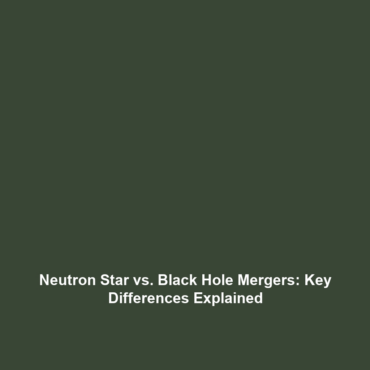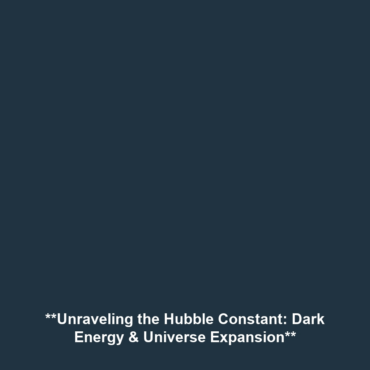Differences Between Neutron Star Mergers and Black Hole Mergers
Introduction
The study of neutron star mergers and black hole mergers represents a significant frontier in astrophysics, particularly in the field of gravitational waves. These cosmic events provide invaluable insights into the fundamental properties of matter and the extreme conditions of the universe. As researchers analyze the data emitted from these mergers, they unlock mysteries surrounding the formation and evolution of both neutron stars and black holes. Understanding the differences between these two types of mergers is essential for interpreting the myriad gravitational wave signals detected by observatories, thereby enhancing our knowledge of the universe’s behavior.
Key Concepts
Understanding Neutron Star Mergers
Neutron star mergers occur when two neutron stars orbit each other until gravitational forces cause them to collide. This event is accompanied by the release of significant energy, often detectable as gravitational waves and electromagnetic signals such as gamma-ray bursts. The merger creates heavy elements like gold and platinum, enriching the cosmos.
Understanding Black Hole Mergers
In contrast, black hole mergers happen when two black holes spiral towards each other and collide. These events also emit strong gravitational waves; however, they lack electromagnetic counterparts (like light or radiation). The final product is a larger black hole, whose mass is almost the sum of the two original black holes, minus some energy lost through gravitational wave emissions.
Applications and Real-World Uses
The exploration of neutron star mergers and black hole mergers serves multiple important applications in the realm of gravitational waves. Some significant applications include:
- Astronomical Detection: The advancement of gravitational wave observatories allows for the detection of these mergers, providing new data on cosmic events.
- Nuclear Physics: Neutron star mergers contribute to understanding the creation of heavy elements and the behavior of matter under extreme conditions.
- Cosmology: These mergers help refine the Hubble constant and improve models of cosmic expansion.
Current Challenges
Despite the advancements in research surrounding neutron star and black hole mergers, several challenges persist:
- Complexity of Numerical Simulations: Accurate modeling of mergers requires immense computational power and complex algorithms.
- Data Analysis: The sheer volume of data generated by gravitational wave events poses significant challenges for analysis and interpretation.
- Understanding of Emissions: Differentiating between the gravitational wave signals of neutron star and black hole mergers remains a complex endeavor.
Future Research and Innovations
The future of studying differences between neutron star mergers and black hole mergers in the context of gravitational waves is promising. Upcoming innovations include:
- Next-Generation Detectors: Facilities like the upgrade to LIGO and the introduction of space-based observatories (e.g., LISA) will vastly improve detection capabilities.
- Multimessenger Astronomy: Integration of gravitational wave data with electromagnetic and neutrino signals promises deeper insights into cosmic events.
- Theoretical Advancements: Ongoing research aiming to refine models governing stellar evolution will help clarify the processes leading to these mergers.
Conclusion
Understanding the differences between neutron star mergers and black hole mergers plays a pivotal role in the rich field of gravitational waves. As we enhance our detection and analytical capacities, the insights gained will yield transformative impacts on our comprehension of the universe. For further reading, explore our articles on gravitational wave detection technologies or the formation of black holes.

